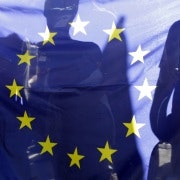Rating Europe's new climate ambition
The European Commission overnight announced new energy and climate targets for the EU. Here are three things you really need to know:
1. The targets
The EU has three existing targets – on greenhouse gases, renewable energy, and energy efficiency – to see it through to 2020. Today's announcement was about what the EU would do to 2030.
Climate target:
To reduce emissions by 40 per cent by 2030. This will have to be done by the member states' cutting emissions at home, instead of funding projects abroad.
Renewable energy target:
The commission has recommended that the EU seeks to get 27 per cent of its energy from renewable sources by 2030. It doesn't require specific countries to adjust their policies to meet the goal, however.
Energy efficiency target:
Last night's announcement did not set a new energy efficiency goal. The role of energy efficiency policies will be clarified when the commission publishes an Energy Efficiency Directive is published later this year.
2. The climate goal isn't wildly ambitious
Despite the EU's climate commissioner, Connie Hedegaard, claiming that new climate goal was "not a small statement, it's a big statement" of the EU's intentions, the 40 per cent target isn't particularly ambitious.
The EU's own impact assessment suggests emissions could be cut by about 32 per cent if countries carried on implementing climate and energy policies as expected. The 40 per cent goal is more ambitious than some commentators were expecting, however. There had been speculation that the commission would recommend a 35 per cent emissions reduction goal.
While the 40 per cent goal is broadly in line with the EU's longer term target to reduce emissions by 80 per cent by 2050, it might not be enough to help prevent the world warming by two degrees above pre-industrial levels – the minimum level of ambition agreed by 192 countries in 1992.
The 40 per cent goal is the "least ambitious" target the commission could have proposed if it remains committed to limiting warming, environmental consultancy Ecofys argues. It says the latest research suggests the EU should instead be aiming for a 50 per cent reduction.
Professor Kevin Anderson from the Tyndall Centre on Climate Research goes further. He argues that if the climate is a bit more sensitive to greenhouse gases, or emissions peak later than scientists thought they would back in 2007, the EU's new target should be closer to an 80 per cent reduction.
3. It's not clear how the EU will ensure countries ramp up renewables
The new 2030 renewable energy target represents a change of approach by the European Commission.
Previously, countries had specific targets to go alongside the wider EU goal. The commission last night decided to give countries more flexibility, making the target binding for the region, but not specific countries.
That could mean that some countries – most likely Germany – take most of the burden of increasing the EU's renewable energy generation, while other countries do little. The commission's president, Jose Manuel Barroso, said it would ensure renewable energy policies across the region "add up" to 27 per cent, but didn't specify how.
In the end, it could come down to the EU trusting countries to fulfil their climate promises and hoping renewable energy plays a large part in their efforts.
The 27 per cent target is also not very ambitious. The commission's own analysis suggests renewable energy would provide about 24 per cent of the the EU's energy in 2030 even if there were no targets.
That could explain why Barroso said he thought the overall package was "ambitious, but feasible".
Next steps for the EU's 2030 climate targets:
– February 2014: European parliament votes on its position on the commission's 2030 target proposal.
– March 2014: Member state ministers and heads of state discuss the 2030 target in the EU Council
– June 2014: Commission releases the energy efficiency directive
– June 2014: Member states potentially meet again to discuss energy and climate issues
– 2020: Deadline for EU states to meet old 2020 greenhouse gas, renewable energy, and energy efficiency targets.
Originally published by The Carbon Brief. Reproduced with permission.













